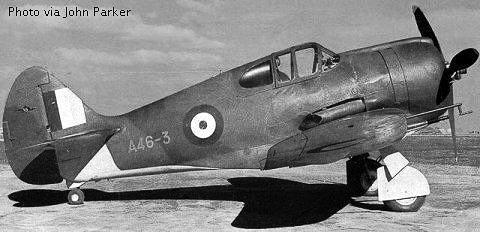

The Commonwealth Aircraft Corporation at Fisherman’s Bend near Melbourne, Australia is well known for producing a number of aircraft types during and just after WWII based upon original designs from North American Aviation. One of their most famous is the CAC Boomerang, a stop-gap fighter developed from the earlier CAC Wirraway, which itself derived from the North American NA-16 (which became the T-6 Texan in USAAF service). Australia was in a pickle in early 1942. It was at war with a seemingly invincible Imperial Japan, and had no guaranteed war material supply chain from the USA or Britain. The country raced to build up an indigenous armory, and the CA-12 Boomerang was one of the weapons which resulted from this crash-production program. Interestingly, a key member of the design team, Fred David, had previously worked for both Heinkel in pre-Nazi Germany as well as Aichi and Mitsubishi in Japan before coming to Australia. He was therefore well informed about Axis aircraft technology. The Boomerang used the same center section, wings, tail and undercarriage of the Wirraway, already in production, along with a newly designed forward fuselage coupled to the powerful Pratt&Whitney Twin Wasp engine (already produced under license in Australia). They armed the Boomerang with a pair of 20mm cannon and four .50 cal machine guns in the wings; a powerful punch by any standard at that time. CAC worked fast, and they had to. They received their first order on February 18th, 1942, and had a prototype, serial A-46-1, flying by May 29th!
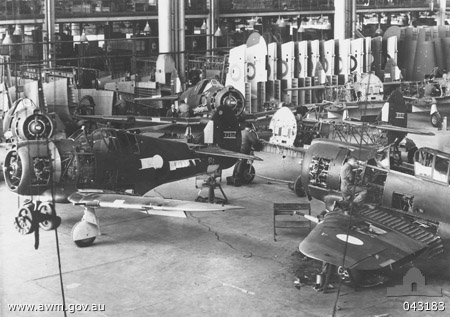
It flew well, and despite being a lesser aircraft to contemporaries such as the Mitsubishi Zero, the Boomerang was an essential mainstay of Australia’s defense in those early dark months of WWII in the Pacific. CAC continued developing the Boomerang, and by mid-1943 had refined the design such that it performed similarly to the Spitfire Mk.V and P-47 Thunderbolt.
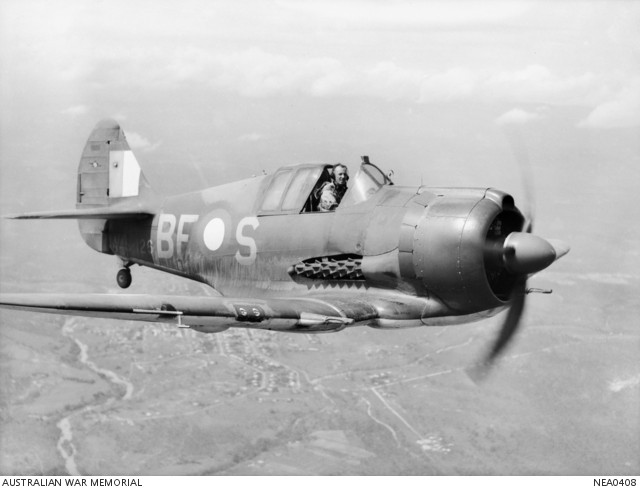
However, by that point in the war, the supply chain from the USA and Britain was far more secure, and allowed the free flow of superior Allied types to make their way to Australia. CAC ended Boomerang manufacture, replacing it on the production line towards the end of the war with license-built versions of the P-51 Mustang. No longer needed for defense, Boomerangs were relegated to training roles or retired to the scrap heap. Sadly, of the 250 built, only a single, relatively complete airframe made it into preservation, this being the now fully-restored A46-30 at the RAAF Museum in Point Cook, Victoria.

However, a couple of dozen derelict fuselages and other components survived in scrap yards and on farms across Australia, and from these meager remains a number of restoration projects have arisen, some of which are flying now. One of these rare airframes is A46-3, an early production prototype, and the oldest confirmed survivor. Australian Rick Anderson has this gem-in-the-rough under his care right now, and is endeavoring to bring her back to static condition at his place in Adelaide, South Australia. Anderson describes his project in the following narrative…
All Boomerangs Come Back
by Rick Anderson
CAC CA12 Boomerang A46-3 did just that, she came back. Manufactured at the CAC Fisherman’s Bend plant, Melbourne in 1942, with the construction number 826, A46-3 was the last of the three prototypes and one of only five airframes to have the straight overturn truss (A46-5 still survives, and is under restoration with Ashley Briggs in Melbourne, Victoria).
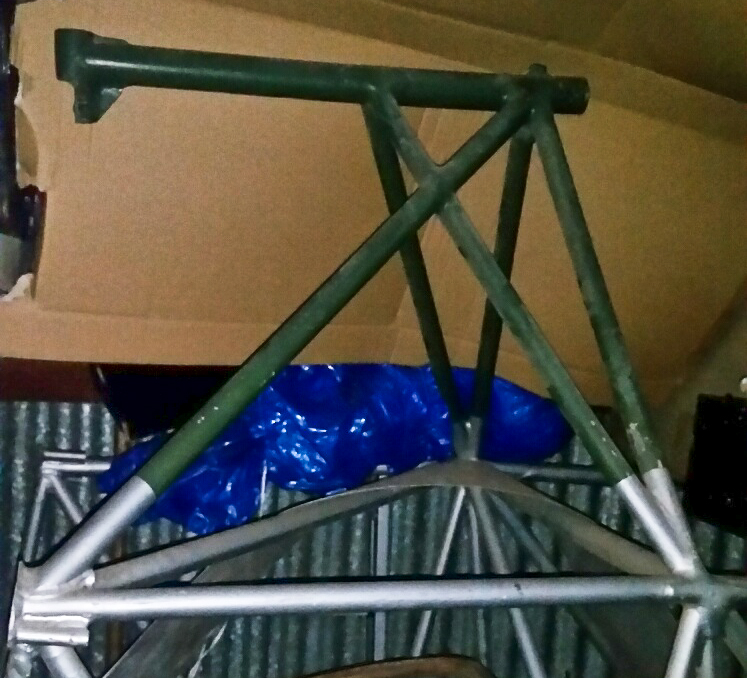
A46-3’s first military posting was in October, 1942 with No. 2 Operational Training Unit in Mildura, New South Wales. For the next three years she moved through several units including No. 8 OTU, No. 8 Central Gunnery School and 7 Aircraft Depot. In late August, 1945, the Boomerang, no longer needed, went to No. 7 Central Recovery Depot for storage, then conversion to components in mid-1946.
At some point during the next 40 or so years the skeletal airframe made its way from Tocumwal NSW to end up back in Mildura with Pierce Dunn. In the mid-80s Bob Jarret, then president of the South Australian Historical Aviation Museum (now known as the SAAM), and transported her to Adelaide SA. This is when I became involved with Boomerang A46-3. As a kid making model kits, the Boomerang was always one of my favourites, but back then the thoughts of actually owning one was anything but a reality. Then in my mid-20’s, I actually managed to acquire one, this one!
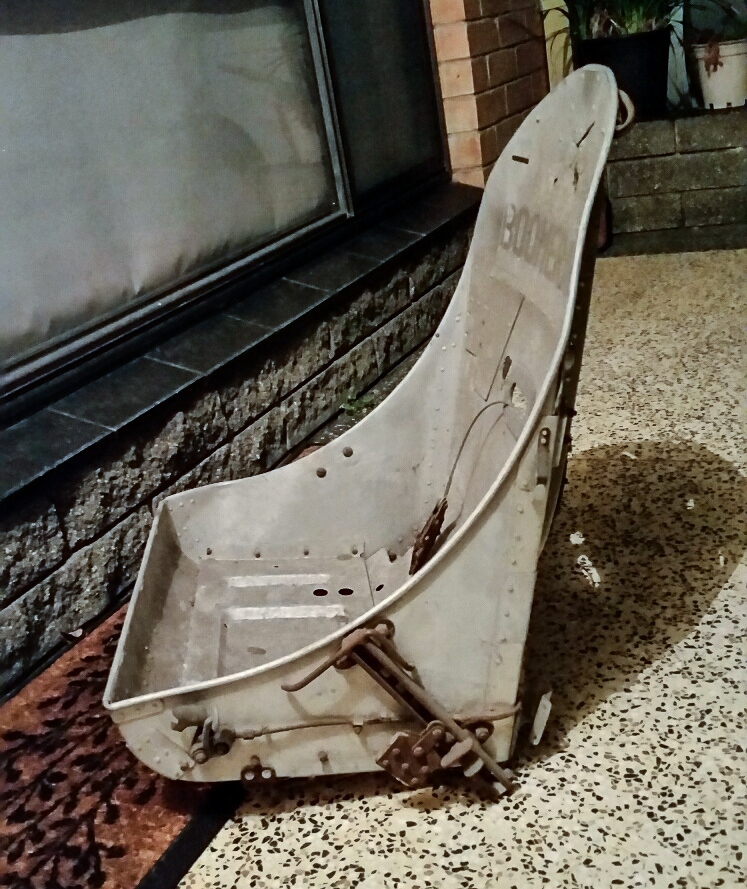
The now rusty and bent airframe resided in my parent’s garage for many years, stripped of any remaining components. As I moved out and my life took on a family role, the airframe sat so I “threw the Boomerang” (only figuratively) to a friend and fellow enthusiast, Bob Hall. Bob spent quite a lot of time and effort working on the aircraft bringing it up to a point that it was suitable to display in the SAHAM.
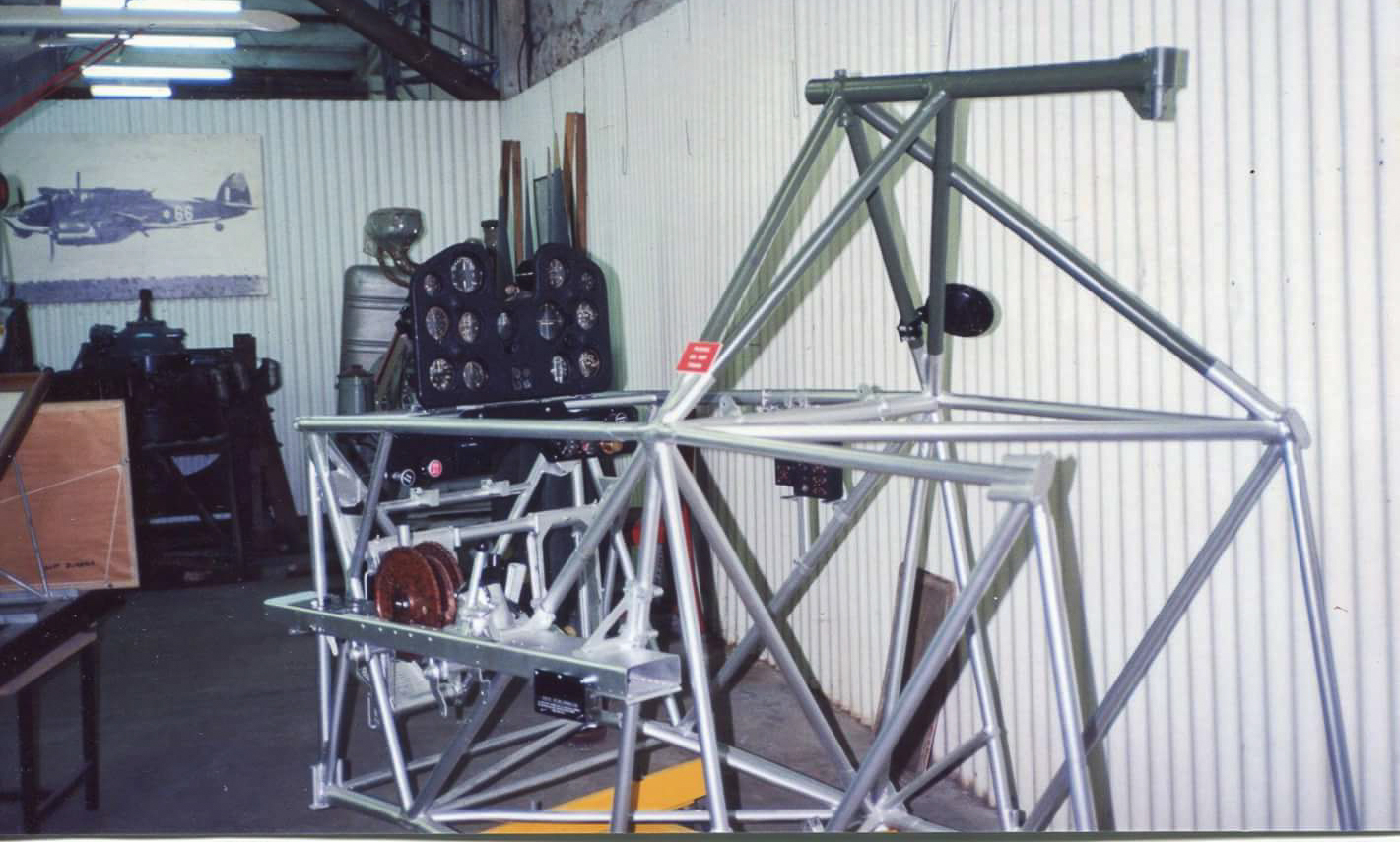
Now if you’ve ever thrown a boomerang, you’ll know that it comes back to you eventually and A46-3 did just that. Flash forward another 25 years or so; the airframe display had been dismantled and stored, and Bob had decided that an aircraft didn’t fit into his life style. He contacted me knowing that I still held a strong interest in this aircraft…. And so it came back.
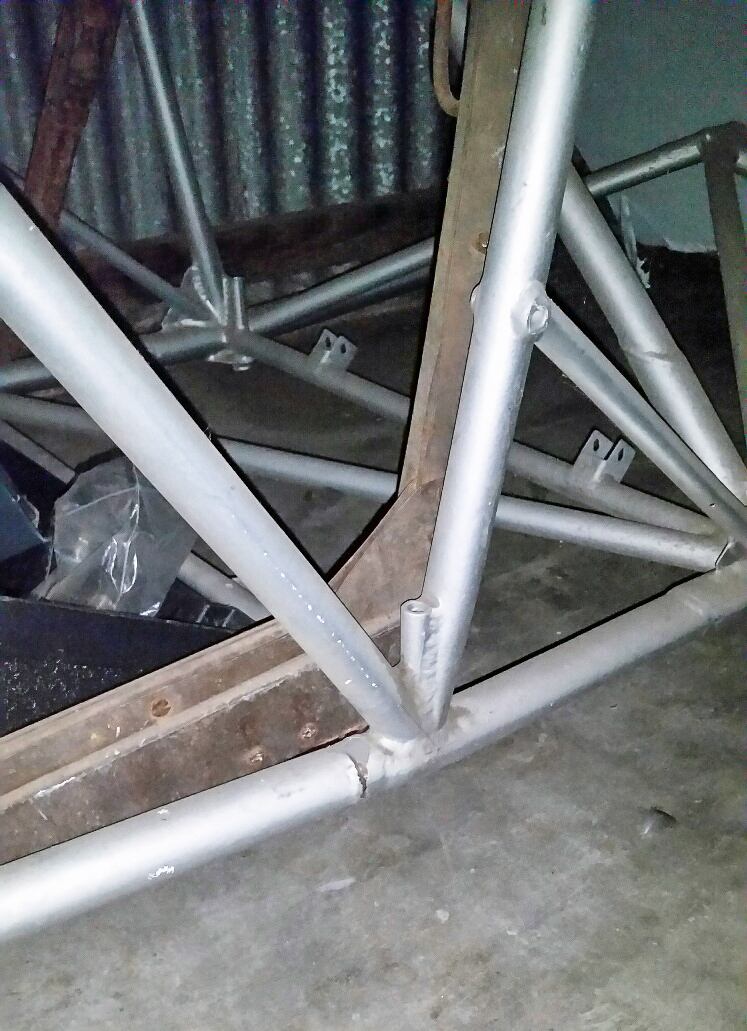
Currently still stored, but this time in my garage, it sits waiting on me to make the time to recommence the slow restoration back to a static displayable aircraft. She’s not airworthy as the lower chrome moly frame is damaged and repairing it would bring an expense that only a lottery win could fix. I have a sum of components stored in a number of locations around town and slowly (very slowly) they are coming back together. The restoration of Boomerang A46-3 hasn’t stalled, but is more or less idling until the time is right for this 75 year old to shine again. On the plus side I think my partner quite enjoys telling people that there is an aircraft in her garage.
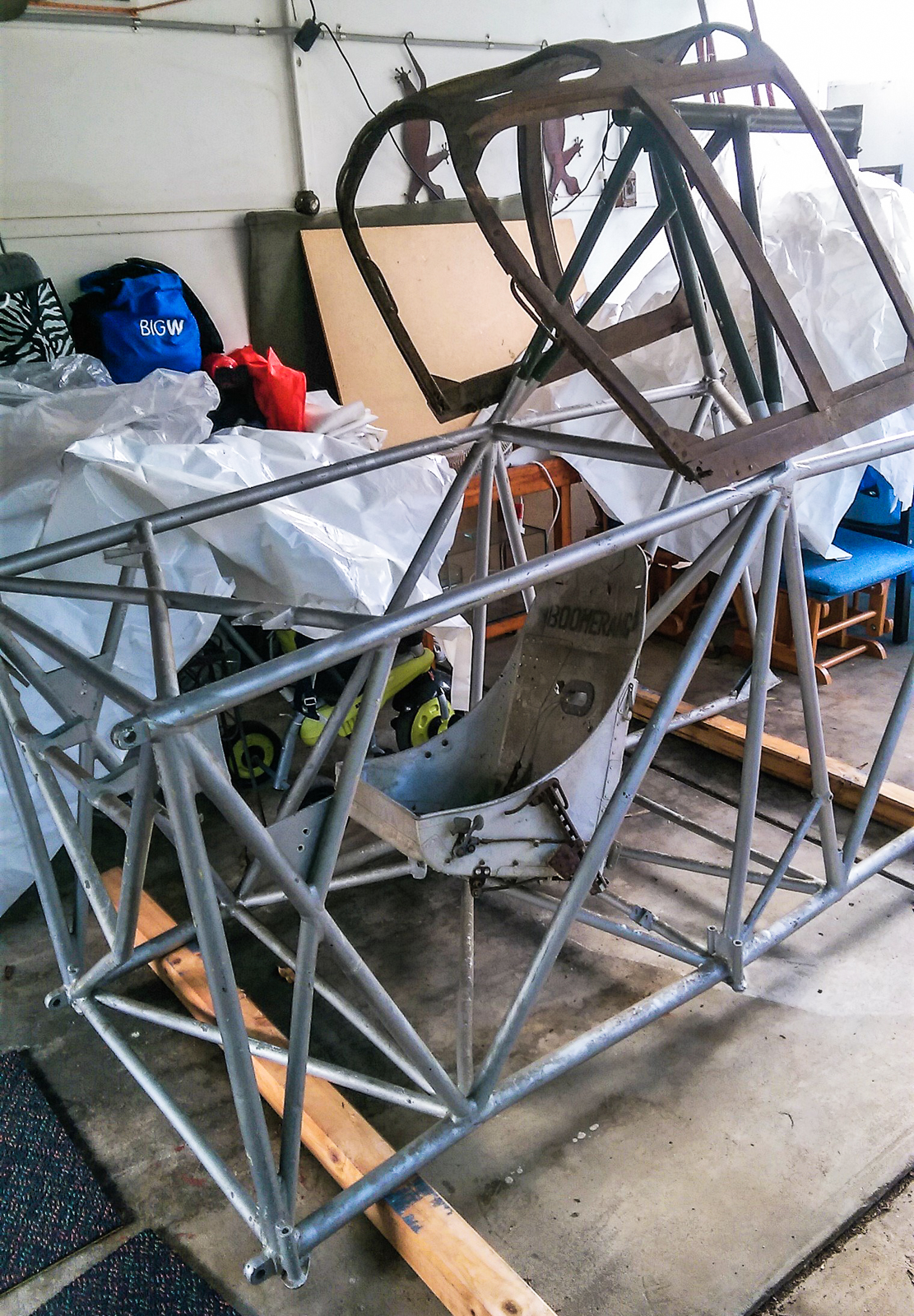
Of the 250 iconic Australian WW2 fighter aircraft built by CAC, 28 Boomerang’s remain in various stages of completion. Two are currently flying regularly, with up to 11 potential flyers in the wings. A mock up flies in Europe and one or two will eventually go to the USA. The remainder are either on display already or under restoration to static condition, with a few more in storage or being consumed by other restorations. Considering the state of affairs just a decade or so ago, the Boomerang is quite literally ‘booming’ today, and long may it continue!
Many thanks to Rick Anderson, Bert Dugdale and Phil Buckley for providing this article and its fascinating photographs to WarbirdsNews. We wish Rick Anderson all the best with his restoration project, and hope that A46-3 rises again sometime soon!



Hi,
Even though the fast development of the Boomerang was a remarkable achievement and a credit to all involved, it was quickly recognised as being a poor fighter and was never “an essential mainstay of Australia’s defense in those early dark months of WWII in the Pacific.”
By the time it was ready for service in March 1943, the supply of P-40s from the USA and Spitfires from Britain for the RAAF was in full flow. The Boomerang did however prove to be excellent in the army co-operation role, serving with distinction in New Guinea and Bougainville.
The statement “CAC continued developing the Boomerang, and by mid-1943 had refined the design such that it performed similarly to the Spitfire Mk.V and P-47 Thunderbolt” is just nonsense.
All 249 production Boomerangs were to the same mechanical standard with no performance enhancing developments whatsoever. One additional experimental Boomerang with turbocharged engine was tested in 1943-44 but never put into production.
Good luck to Rick and A46-3. It will be great to see another example of this very important Aussie aircraft in the air.
Cheers,
Stewart Wilson
Editor and Publisher Aero Australia magazine
Author ‘Wirraway, Boomerang and CA-15 in Australian Service’
Stewart, thanks for adding this note and adding additional information about the airplane.